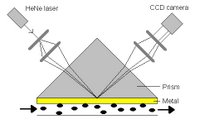Leading candidates:
TRU15 Rumatoid arthritis non-Hodgkins Lymphoma
TRU16 non-Hodgkins Lymphoma
TRU17 cancer
Remember the pipeline standards in biotech. RA and cancer are highly desirable diseases. Targets are established so no discovery needs to take place. Binding to the known target is step one.
Trubion uses the success story of Rituxan. This is a monoclonal antibody that binds the same TRU15 target, CD20 which is expressed on the surface of B cells. A phase III studiy with Rituxan has shown that the antibody binds to B cells and results in B cell depletion. B cell depletion results in significant clinical improvement. Trubion thus has to merely follow in the path being stomped down by the makers of Rituxan.
The Cargo Cult Scientist has used Rituxan in mice studies. The antibody works. None of the mice who recieved Rituxan developed tumors. There was no need to manipulate the data as we did with mice in the group who received our drug. I believe I've talked about this shameful day in a previous post. Since Rituxan was the positive control, we simply did not mention these results. Our drug was an antibody against denatured type IV collagen. Our negative control was PBS. We manipulated the data to show a double digit percentage difference in tumor size between our anti-collagen Ab and the PBS. This made for a nice bar graph.
It's easy to show an antibody binding to a target. What about a SMIP? Did Trubion use the curves? Did they make any attempts to assign an affinity value for TRU15? How did they evolve to a number 15? What about the first 14? Were any related? Was affinity improved from a previous SMIP?

In my laboratory experience I have yet to meet a PhD scientist who has ever measured protein to protein affinity. Measuring affinity is different than claiming high affinity. Using surface plasmon resonance will provide the investigators with an affinity constant. The affinity of an interaction is determined from the level of binding at equilibrium (seen as a constant signal) as a function of sample concentration.
The next step is to determine the biological effect of the binding. How does it get to its target. How many mols reach the target? These are the questions. High above Elliot Bay is a company who intends to develop drugs better than monoclonal antibodies. They are not providing binding constants, curves, nor methods of comparinig SMIPs to antibodies. Before any biological functions can be claimed, they must provide some data that shows that SMIPs have reached the target and that they function in a safer way the an antibody. Human antibodies have been developed by evolution. How well do Trubions SMIPs match up.
Is there a scientist in the house who can compare a SMIP to an antibody?
No comments:
Post a Comment